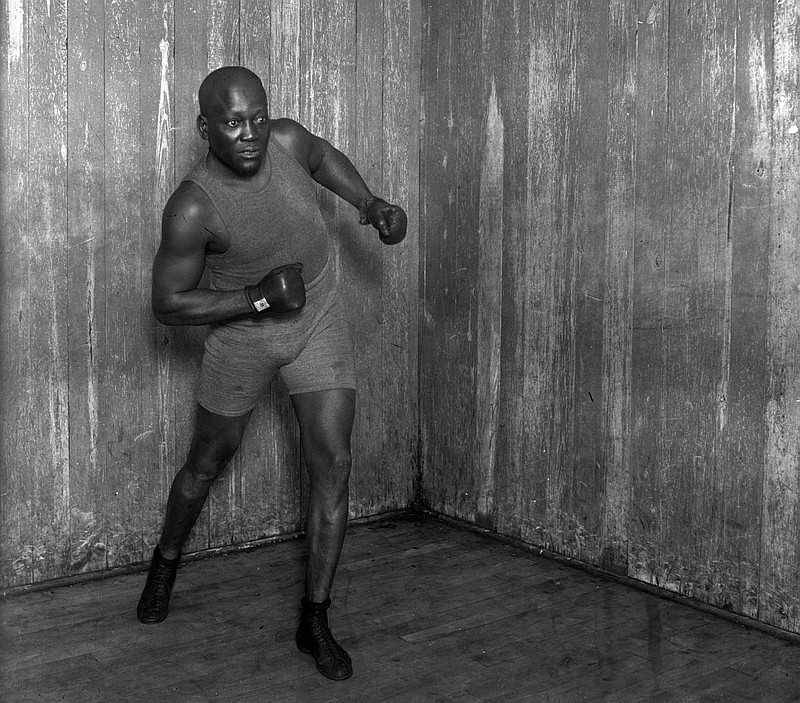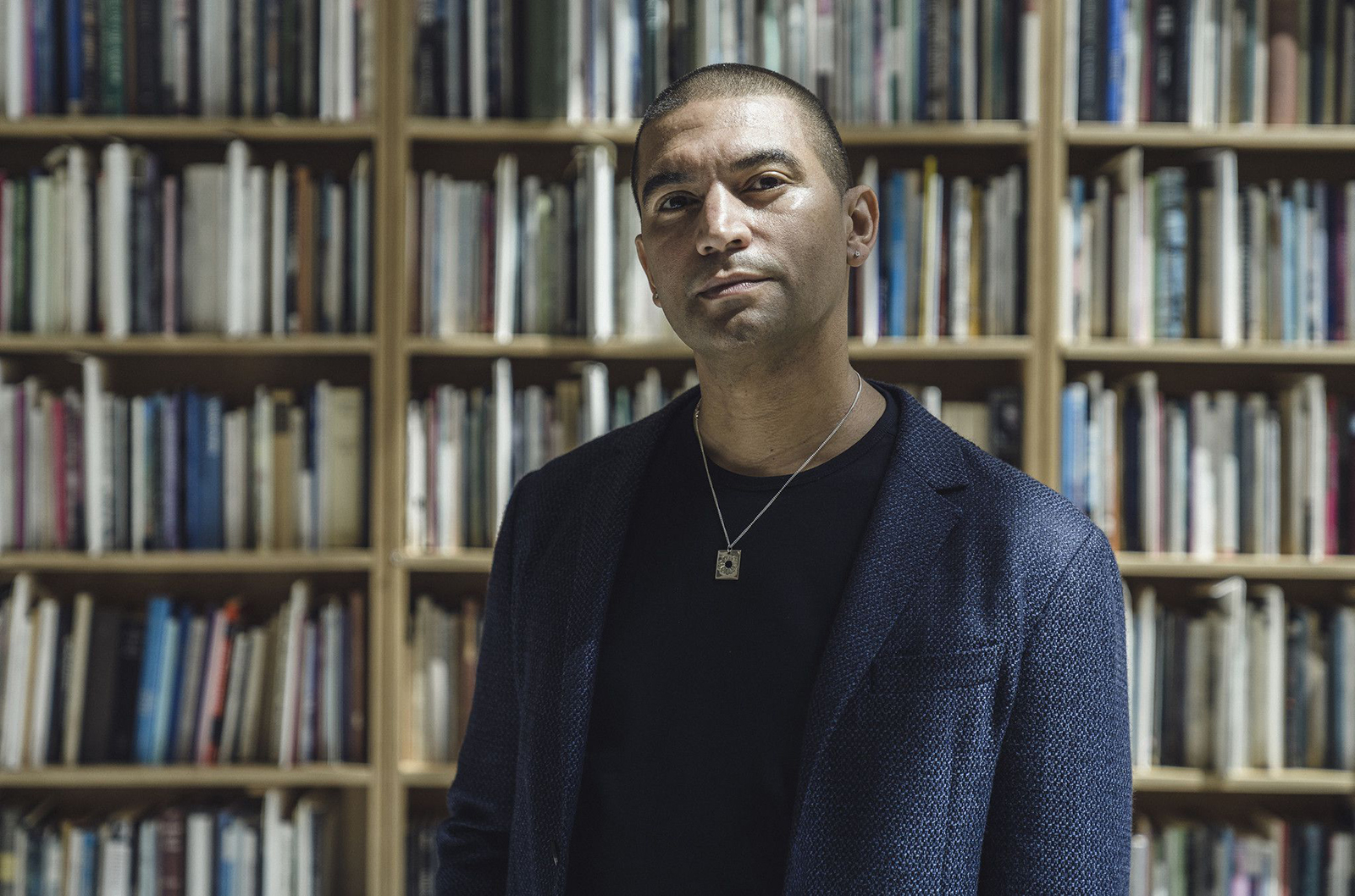The first Black boxing champion was a man named Jack Johnson, and a few years before he died in 1946, he told a young reporter, "Just remember, whatever you write about me, that I was a man."
You will meet this man in all his ferocity, style, audacity and courage in a spectacular new book, a dynamic and unforgettable collaboration between artist Youssef Daoudi and writer Adrian Matejka.
"Last On His Feet: Jack Johnson and the Battle of the Century" is a wonder of words and images. It could be called a graphic novel if that description didn't fail to fully capture its cinematically visual and literary substance.
Writers and artists have long been intrigued by boxing, with the physical and emotional drama that is inherent in the sport, as far back as Homer and Plato. Jack London wrote a lot about boxing (in this book showing a vile racism) and so did George Bernard Shaw, A.J. Liebling, who called it the "sweet science," and Hemingway and Mailer. Novelist Joyce Carol Oates once called it "the drama of life in the flesh."
Artists too have given us centuries of boxing paintings and statues on display in the world's museums and the 20th century has a pile of famous boxing paintings.
This book deserves a place among the very best.
You might remember Johnson from "The Great White Hope," which won a Pulitzer Prize as a play in 1969 and was later a movie, starring James Earl Jones.
Matejka learned of the boxer through his mother.
"She and I used to watch boxing matches on TV when I was young," he said. "Often, when a boxer would lose, she would say, 'Well, he's no Jack Johnson.' I never knew what she meant or who that was. Years later I would discover that she had bet money on some of the fights and I would discover who Jack Johnson was."
His research about the fighter would lead to his 2013 poetry collection titled "The Big Smoke." It was a finalist for the National Book Award and Pulitzer Prize, which cited it as an "imaginative work by a commanding poet who engages the history and mythology of larger-than-life boxer Jack Johnson." But he could not let the fighter go, saying, "I knew there was more for me to say, his life was so full and complex."
Matejka wrote a draft for another book. He and his literary agent interviewed a number of possible visual artist collaborators before finding Daoudi, a Moroccan-born artist and illustrator living in France.
"He knew of Jack Johnson and in seeing his book about the (jazz great) Thelonious Monk (2018's acclaimed "Monk!") I thought that if he could make Monk's music dance like that on the page he could handle this," Matejka said.
The collaboration would take five years. "We were lucky to have that much time," Matejka said. "COVID caused delays but that enabled us to go far beyond what we had both originally imagined."
They have created what I would call an "art book," a stunning visual narrative that gives the words substance and the story a certain and expansive freedom.
The pair center their story of Johnson's life on a 1910 championship fight in Reno, Nevada. That was when Johnson did battle with James Jeffries, the former champion coaxed from retirement on his California alfalfa farm by the entreaties of novelist London who "begged him to take the championship back for the white race," the lure of a big payday and the chance to become "the Great White Hope."
It was the biggest sporting event of its time, attracting a crowd of nearly 20,000 people, the majority of them eager to see Johnson defeated as they screamed vile racial epithets. The shadow of racism hangs heavy in the air as Daoudi's stark drawings and Matejka's spare words help paint the scene on that July 4 fight: "It was the kind of hot that makes water disappear from your glass like magic & boils sweat on the forehead. Eggs fried without a fire ... One man's cigarette lit on its own. ... That didn't stop the 20,000 spectators who came in automobiles, on horseback & by horse-drawn wagon."
This fight would become a sad symbol of the nation's bloody racial history, its result sparking riots and death in cities across the country.
Between rounds of the fight, the narrative leaps backward and forward, taking us to Johnson's youth in Galveston, Texas, to "nights I slept on dirt floors or in the back of boxcars with my arm as a pillow trying to get a little bit of this American Dream." We move forward into times of fast cars, extravagant living, exile, prison and death.
The terrible invective ever hurled Johnson's way was not only due to his beating white men in the ring but his relationships with white women outside of it.
Johnson's flaws were not inconsiderable and not ignored. It is painful to read of and to see his beating of his wife Etta Duryea before her suicide in 1912. He was a complex man, a flawed but defiant man fighting not just other men but a society and its laws that were determined to knock him out for keeps.
This is a great American story, it echoes across the contemporary landscape.
"From the day I was born, I've been trying / to live my life like a man. I have eyes / & I have a heart & I make my choices / without the dictation of any other man."
Matejka, who was Indiana's poet laureate, wrote that. He recently moved to Chicago to become the editor of the venerable Poetry magazine. He is pleased with the response to "Last On His Feet" and why not?
Library Journal writes of its "Lyrical narration and powerfully evocative black-and-white illustration combine for an uncommonly propulsive, completely immersive biography."
Publishers Weekly calls it "a big brawl of a book that, like the greatest boxing matches, finds the poetry in the violence."
I call it a masterpiece.


